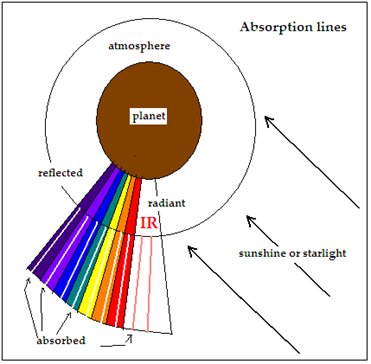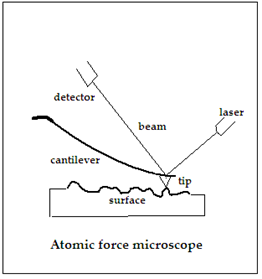Movement is easier to detect than chemical indicators, says S.Ananthanarayanan.
There is much interest in the search for evidence of life outside the earth. While one way is to analyse samples brought back from outer space, a more promising method is through studies by probes that are landed on distant worlds. The indicators of life, that we look for, are based on the chemicals that are associated with life as we know it on earth. Hence, we use known methods to test for life on far off planets. But we could be misled if the chemicals associated with other forms of life are not the same as those on the earth.
Some years ago, an alternate method to detect life, without relying on chemicals, was proposed. This was based on the fact that living things do not stay unchanged, or at one place, but they grow, or move. Giovanni Dietler, Sandor Kasas and Giovanni Longo, with Simone Ruggeri FS, Benadiba C, Maillard C, Stupar P and Tournuc H, at Ecole Polytechnique, Fédérale, Lausanne, in the journal, Proceedings of the National Academy of Sciences (PNAS), suggested a method using a micrometre scale see-saw, to detect microscopic physical movement. as an indicator of growth or locomotion. One immediate application could be to assess the efficacy of drugs in the pharmaceutical lab. But it could be equally effecting in detecting life at an extra-terrestrial place!
Chemicals of life
Life, as we know it, is associated with carbon-dioxide, methane, water and ozone. Finding all these, or even most of them, in a planet in the solar system, or even elsewhere in space, would be taken as a first-rate indicator of life. Our space probes that are sent to the planets have arrangements to analyse the soil and atmosphere when they get there. Even here on earth, we can look for the signs of chemicals on distant planets by analysing the spectrum of the light that has passed through the planet’s atmosphere while it is reflected to the earth. Or, we could study the spectrum of infra-red light, or heat, that the planet radiates. As particular chemicals in the atmosphere absorb specific frequencies of light, or IR waves, we can make out that these chemicals were there, by the frequencies that seem to be reduced in the spectrum of the light that comes to us. The mix of the four signature chemicals on the earth has changed over the ages, as life evolved, from single-celled creatures, to plants, dinosaurs, birds and mammals. Finding signature chemicals on a planet would hence indicate both a strong possibility of life, as well, possibly, the state of evolution.

These methods of detecting life would work, of course, for life of the kind that we know of, here on earth. But there could be other forms of life, which would not lead to the build-up of just these or all these chemicals. While life on the earth is carbon based, there could, in principle, be organic-type molecules based on silicon too. Not that it is likely, as silicon-based life would need to exist at high temperature, and metabolic processes would need to be different, if at all possible. But there could be other chemical bases for self-replicating organisms that resemble life. And then, even if the life forms were similar to those on the earth, there may be different processes in the circulation of bye-products, which would not leave signature chemicals in the atmosphere. Looking at all this, although finding the right chemicals on a planet would be a strong indicator of life, not finding them would not rule out the possibility.
One more indicator of life that is considered is an indirect one, the creation of a smooth and undulating topography in a planet that supports life, as opposed to jagged and rocky one in a planet that does not. Studies of soil erosion and movement of landmasses on the earth have shown that while rivers, rainfall, freezing of water and winds do cause the break-up of rocks to smaller fragments, the chief cause of creating loose, transportable soil, which moderates discontinuities in the landscape are biotic, or biologically driven processes, like animal burrowing, growth of roots and microbial action. These effects also tend to synchronise with seasonal temperature variations and maintain the topography.
But for all this, topography alone cannot assure biotic origin, as other processes are also capable of creating smooth and soil covered terrain. In the Atacama Desert of Chile, there is a hyper-arid region called the central depression, where biotic processes are simply not supported. But salt weathering does break down bedrock and the rock surfaces receive inputs of wind-blown soil sediment. And the landscape is rounded and covered with soil!
Detecting movement
The Lausanne scientists adapted the existing atomic force microscope to sense motion at the scale of the activity of bacteria, to act as a detector of direct and non-chemical signs of life. The idea is that if there is something living in there, then it is going to move, either move some limb or carry out a biological process, of feeding, excretion or growth. The atomic force microscope is tiny protrusion, just micrometres in dimensions, that swings free, from a holder. The protrusion is thus a lever fixed at one end, or a cantilever. At the free end there is a tip, of the order of nanometres (a millionth of a millimetre), which protrudes down to scan the surface being examined. Unevenness of the surface causes the lever to move up or down, and the movement is detected by a laser beam that reflects off the lever. The arrangement is able to sense undulations of fractions of a nanometre.

In the adaptation by the Lausanne group, the cantilever is moved not by forces on the tip, but by movement of bacteria that are deposited on the lever itself. In trials carried out, the dimensions allow about 500 bacteria to perch on the lever. Movement of even a few of them affects the load on the lever and it swings up or down – to be detected by the laser beam sensor. Over a period of time, the printout of the laser beam trace can reveal if there is movement going in the culture on the lever. “The system has proven accurate with detecting bacteria, yeast, and even cancer cells,” a press release from EPFL says.
An immediate application of the arrangement would lie in the testing of drug preparations. An array of cantilevers could be covered with bacteria or cancer cells and different drug compounds could be tried out at the same time. Where the drugs are effective, there would be rapid decrease and then cessation of movement. This would be a fast and convenient method to test a range of candidate curative agents and speed up drug development.
The same arrangement could also be made part of the test equipment of landing crafts on planets or comets. “As it relies on motion rather than chemistry, the cantilever sensor would be able to detect life forms in mediums that are native to other planets, such as the methane in the lakes of Titan”, said a press note that was issued.
------------------------------------------------------------------------------------------ Do respond to : response@simplescience.in-------------------------------------------